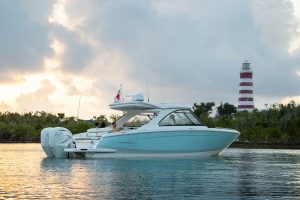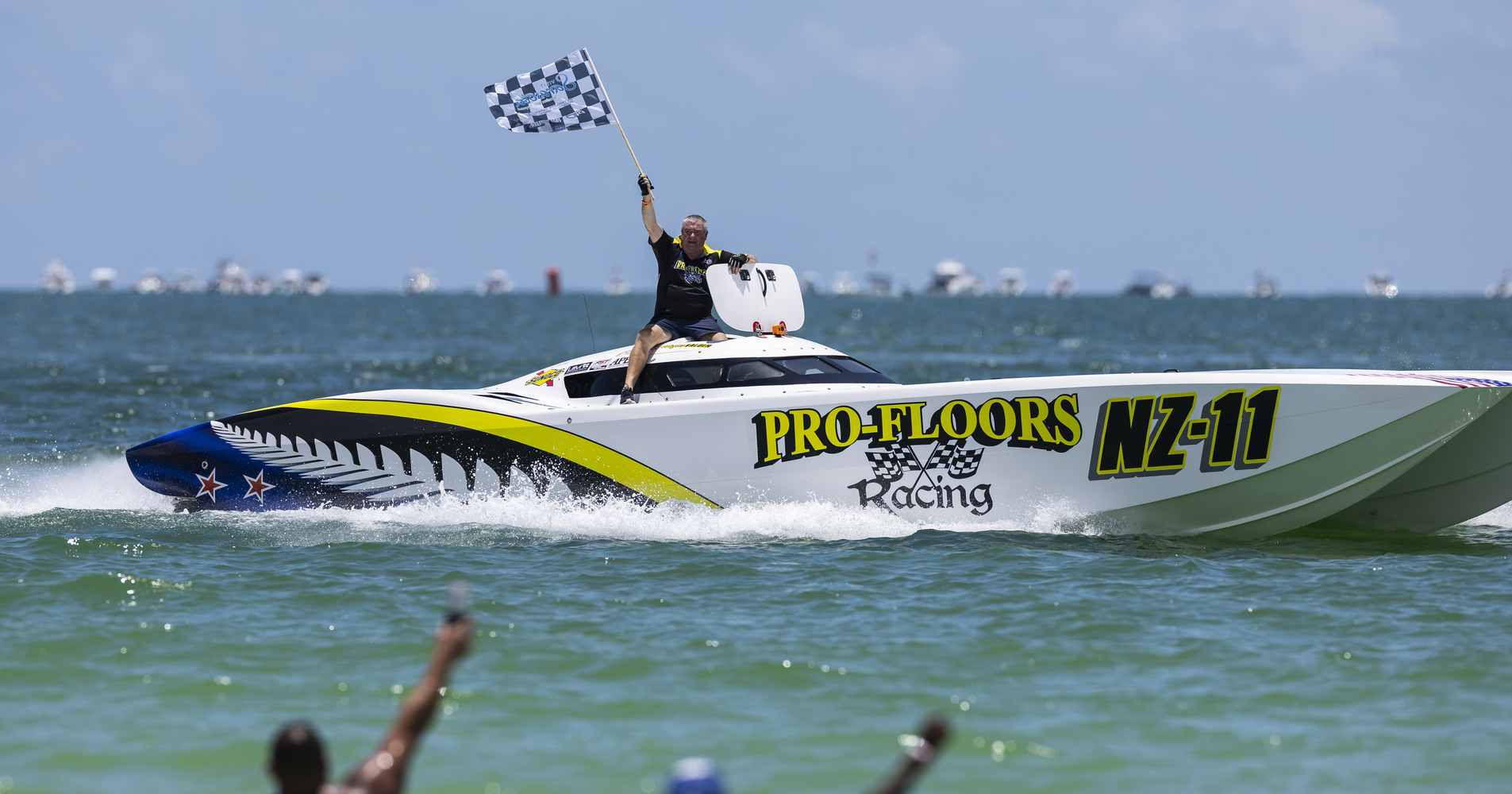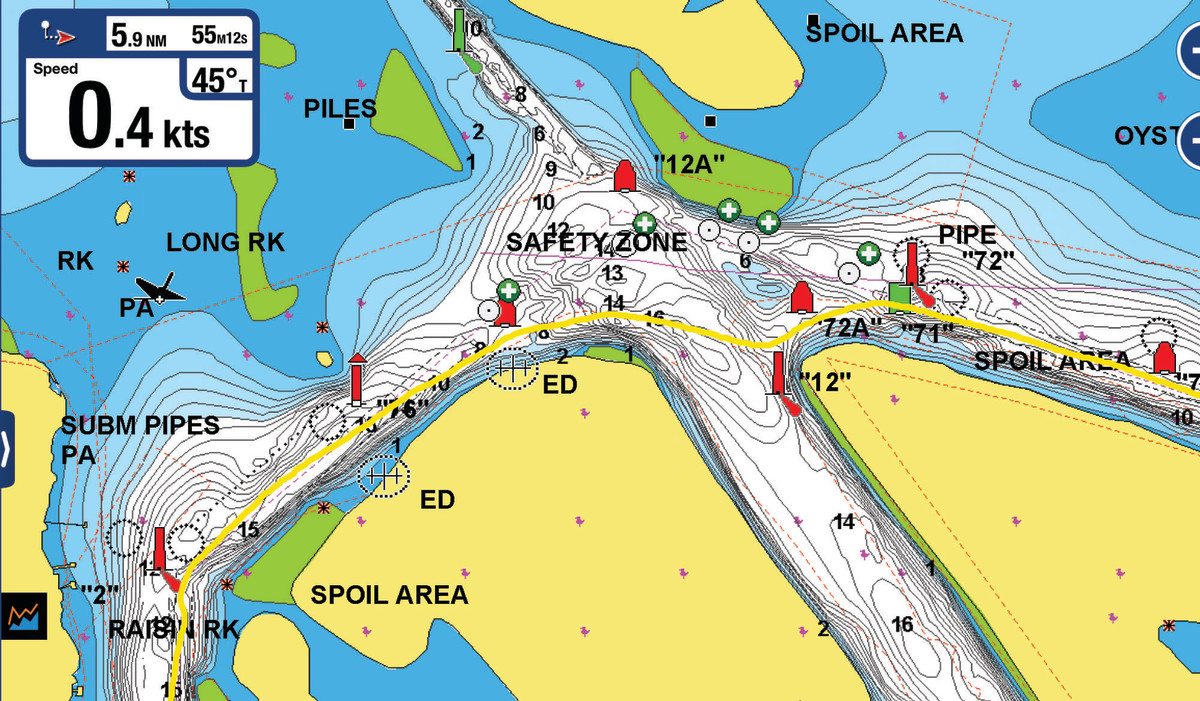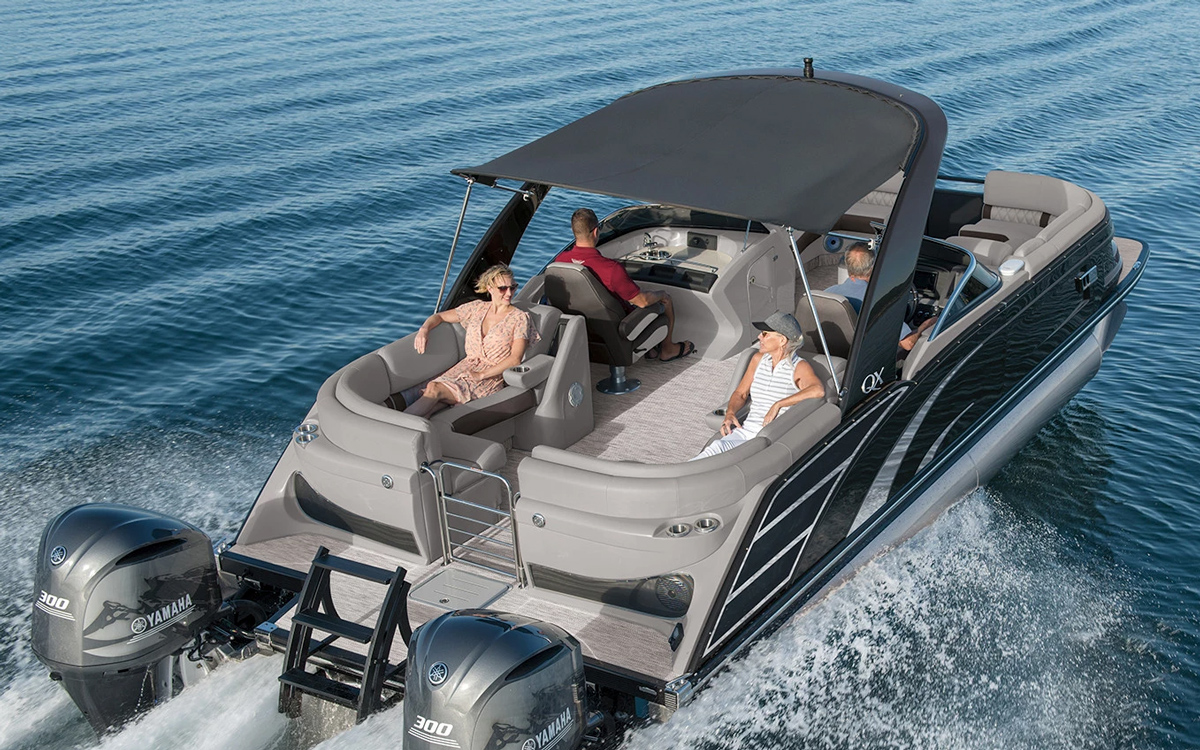Catamaran Boats
Catamaran boats have gained popularity in recent years for their unique design and impressive capabilities. These twin-hulled vessels offer a stable and spacious platform for sailing and cruising. Catamarans come in various sizes, from small day-sailers to large luxury yachts, with prices ranging from $51,240 to over $7 million.
Catamarans are known for their speed, comfort, and efficiency. The two-hull design provides excellent stability, making them ideal for both recreational and commercial use. Many catamarans are used for overnight cruising and day sailing, with the ability to carry between 4 to 40 passengers depending on their size.
Key Takeaways
- Catamarans offer stability, speed, and spaciousness for various boating activities
- These vessels come in a wide range of sizes and prices to suit different needs
- Catamarans are popular for both recreational and commercial use due to their versatility
History and Evolution of Catamaran Boats
Catamarans have a rich history spanning centuries. These multihull vessels have evolved from simple designs to modern, high-performance craft.
Ancient Catamarans
Catamarans have roots in ancient cultures. Early designs featured two logs joined by a platform. These boats were used in Indonesia, Polynesia, and Micronesia.
Pacific islanders built catamarans for fishing and transportation. The design offered stability and speed in rough waters.
Some ancient catamarans reached impressive sizes. They could be up to 21.3 meters (70 feet) long. These large vessels were used for long sea voyages between islands.
Modern Development
The modern catamaran emerged in the 20th century. Boat builders started experimenting with new materials and designs.
In the 1960s, catamarans gained popularity as recreational vessels. They offered more space and stability than traditional monohull boats.
Racing catamarans pushed the limits of speed and design. This led to improvements in hull shape and sail technology.
Today, catamarans are used for various purposes. They serve as passenger ferries, pleasure boats, and even military vessels. Many countries have adopted catamarans for their unique benefits.
Types of Catamarans
Catamarans come in different designs to suit various purposes. These boats have two main categories: sailing and power catamarans. The choice of engine placement also affects their performance and handling.
Sailing Catamarans
Sailing catamarans use wind power as their primary energy source. They have tall masts and large sails to catch the wind. These boats are great for eco-friendly cruising and racing.
Sailing cats have two hull types: displacement and planing. Displacement hulls move through the water, while planing hulls ride on top at high speeds.
Most sailing catamarans have small engines for docking and emergencies. These auxiliary motors help in tight spots or when there's no wind.
Power Catamarans
Power catamarans rely on engines instead of sails. They're faster and more maneuverable than sailing cats. Power cats are popular for fishing, day trips, and short cruises.
These boats often have more interior space than sailing cats. The lack of a mast and rigging allows for larger cabins and deck areas.
Power catamarans usually have wider hulls than sailing cats. This design provides more stability and room for larger engines.
Inboard vs. Outboard
Catamarans can have different engine setups. The choice affects performance, maintenance, and cost.
Inboard engines are inside the hull. They're protected from the elements and run quietly. But they're harder to access for repairs.
Outboard engines hang off the back of the boat. They're easy to maintain and can be tilted out of the water. This reduces drag when not in use.
Some cats use inboard/outboard (I/O) setups. These combine features of both types. The engine is inside, but the drive unit is outside the hull.
Outboard-4 stroke engines are becoming popular. They're fuel-efficient and environmentally friendly. These engines run smoothly and quietly.
Design and Construction
Catamaran design blends form and function. Key aspects include hull shape, building materials, and expert craftsmanship.
Hull Configuration
Catamarans have two parallel hulls connected by a deck or bridge. This layout gives them stability and space. Most use a deep vee hull shape at the bow. This cuts through waves smoothly.
The hulls taper to a flat stern. This helps the boat plane at high speeds. Some catamarans use a semi-displacement hull. This design works well at various speeds.
Hull spacing affects performance. Wider spacing increases stability but can slow the boat. Narrower spacing boosts speed but may reduce comfort in rough seas.
Materials Used
Catamaran builders use several materials. Fiberglass is common. It's strong, light, and easy to shape. Some high-end boats use carbon fiber. This material is very light and stiff.
Aluminum catamarans are also popular. They resist corrosion and are easy to repair. Wood is still used in some custom builds. It offers a classic look but needs more upkeep.
For racing boats, builders may use pre-preg composites. These materials offer the best strength-to-weight ratio.
Craftsmanship
Quality craftsmanship is vital in catamaran construction. Skilled workers shape the hulls and join them precisely. This ensures the boat performs well and lasts long.
Builders use advanced techniques like vacuum infusion. This process removes air bubbles from resin, creating a stronger structure. Careful attention goes into fitting out the interior.
Custom catamarans allow owners to choose layouts and finishes. Production models offer consistent quality at lower costs. Some builders use cylinder-molding for a smooth, seamless hull.
Performance and Specifications
Catamaran boats offer unique performance characteristics and specifications that set them apart from monohull vessels. Their twin-hull design provides stability, speed, and efficiency advantages in various conditions.
Speed Capabilities
Catamarans can reach impressive speeds due to their low-drag hull design. Many performance catamarans can sail faster than wind speed, with some models achieving cruising speeds up to 20 knots. Power catamarans also excel in speed, often outpacing comparable monohull powerboats.
The twin-hull configuration reduces water resistance, allowing catamarans to maintain higher average speeds over long distances. This makes them ideal for both racing and long-range cruising.
Weather conditions and sea state impact catamaran speed less than monohulls. Their wider stance provides stability, letting them maintain velocity in choppy waters where other boats might need to slow down.
Fuel Efficiency
Catamarans typically demonstrate superior fuel efficiency compared to monohull boats of similar size. Their hull design creates less drag, requiring less power to move through water.
Power catamarans often use smaller engines than comparable monohulls, further improving fuel economy. This efficiency translates to longer range and lower operating costs for owners.
Some modern catamaran designs incorporate advanced fuel systems and lightweight materials to maximize efficiency. Fuel consumption can vary widely based on boat size, engine type, and cruising speed.
Horsepower Requirements
Catamarans generally require less horsepower than monohulls to achieve similar speeds. This is due to their efficient hull shape and reduced water resistance.
A typical 40-50 foot power catamaran might use two 300-400 horsepower engines. Comparable monohulls often need larger engines, sometimes exceeding 1000 total horsepower.
Sailing catamarans rely primarily on wind power, but may include small auxiliary engines for maneuvering in tight spaces or during calm conditions. These engines are usually in the 30-75 horsepower range, depending on boat size.
Engine placement in catamarans, with one in each hull, provides excellent maneuverability. This setup allows for precise control, especially when docking or navigating in tight spaces.
Popular Catamaran Brands and Builders
The catamaran market features several top-tier manufacturers known for quality, innovation, and performance. These brands offer a range of options to suit different boating needs and preferences.
Leopard Catamarans
Leopard Catamarans has gained a strong reputation in the sailing world. The company builds both sailing and power catamarans. Their models range from 40 to 58 feet in length.
Leopard's designs focus on comfort and ease of use. Many models feature a forward cockpit, which adds extra living space. This unique layout sets Leopard apart from other brands.
The builder uses modern materials and construction techniques. This results in boats that are both light and strong. Leopard catamarans perform well in various sea conditions.
Leopard offers both owner and charter versions of their boats. The charter versions have more cabins to maximize guest capacity. Owner versions have larger, more luxurious spaces.
Lagoon Catamarans
Lagoon is a French boatbuilder with a long history in catamaran production. They are part of the Groupe Beneteau, a major force in the boating industry. Lagoon offers both sailing and power catamarans.
Lagoon's range includes boats from 40 to 78 feet. Their designs focus on comfort and livability. Many models feature large windows for plenty of natural light.
The brand is known for its innovative features. These include things like flybridge designs on smaller models. Lagoon also puts a strong emphasis on eco-friendly technologies.
Lagoon catamarans are popular for both private ownership and charter fleets. They offer good stability and ample living space. This makes them ideal for long-term cruising or live-aboard use.
Sunreef Yachts
Sunreef Yachts is a Polish builder that specializes in luxury catamarans. They offer both sailing and power models. Sunreef catamarans range from 50 to 100+ feet in length.
The brand is known for its high-end finishes and customization options. Buyers can work with Sunreef to create truly bespoke vessels. This level of personalization sets Sunreef apart in the market.
Sunreef uses advanced materials like carbon fiber in their builds. This results in strong, lightweight boats with excellent performance. Many models feature innovative design elements like folding balconies.
The company also offers eco-friendly options. These include solar panels and electric propulsion systems. Sunreef catamarans are popular among wealthy private owners and in luxury charter fleets.
Invincible Boats
Invincible Boats is an American company that focuses on power catamarans. They specialize in center console designs for fishing and day cruising. Invincible's range includes boats from 33 to 46 feet.
The brand is known for its high-performance hulls. These offer a smooth ride even in rough conditions. Invincible boats are popular among serious anglers and boating enthusiasts.
Invincible uses high-quality materials in their construction. This includes things like composite cores and vinylester resins. The result is a strong, durable boat that can handle tough conditions.
The company offers various customization options. Buyers can choose different layouts and features to suit their needs. Invincible boats are designed for both inshore and offshore use.
Fountaine Pajot
Fountaine Pajot is another French catamaran builder with a strong reputation. They produce both sailing and power catamarans. Their range includes boats from 40 to 67 feet in length.
The brand focuses on creating comfortable, family-friendly boats. Many models feature large lounging areas and spacious cabins. Fountaine Pajot also puts emphasis on good sailing performance.
Their designs often include innovative features. These might be things like outdoor kitchens or large flybridge areas. The company also offers eco-friendly options on many models.
Fountaine Pajot catamarans are popular in both private and charter markets. They offer a good balance of comfort, performance, and value. The brand has a strong dealer network, which provides good support for owners.
Catamaran Usage and Applications
Catamarans serve various purposes, from leisurely day trips to competitive racing. These versatile vessels offer unique advantages in recreational boating, extended cruising, and high-performance competitions.
Recreational Use
Catamarans excel as day-cruising boats for families and groups. Their wide, stable platforms make them ideal for activities like swimming, sunbathing, and socializing. Many catamarans feature spacious cockpits and deck areas, perfect for entertaining.
The shallow draft allows access to secluded beaches and coves that deeper boats can't reach. This opens up more exploration options for day-trippers.
Fishing enthusiasts appreciate catamarans for their stability when casting lines or fighting fish. The extra deck space provides room for multiple anglers and their gear.
Some popular recreational catamaran activities include:
- Coastal cruising
- Island hopping
- Snorkeling and diving trips
- Sunset sails
Overnight Cruising
Catamarans shine for extended voyages, offering comfortable living spaces and amenities. Their ample interior volume provides room for multiple cabins, heads, and a full galley.
The stability of catamarans reduces seasickness, making them popular for family cruising. Large windows and deck hatches create bright, airy living areas.
Many cruising catamarans offer these features:
- Generator for power at anchor
- Watermaker for fresh water production
- Solar panels for sustainable energy
- Ample storage for provisions and gear
Cruising catamarans typically range from 38 to 50 feet in length. Larger models can accommodate 8-12 people comfortably for extended trips.
Racing and Competitions
High-performance catamarans dominate certain sailing competitions. Their speed and agility make them exciting to race and watch.
Popular catamaran racing classes include:
- Formula 18 (F18)
- Nacra 17 (Olympic class)
- America's Cup AC75
Racing catamarans use lightweight materials like carbon fiber to maximize speed. Advanced sail plans and hydrofoils allow them to achieve incredible velocities.
Catamaran races often feature short, intense courses with multiple laps. This format showcases the boats' quick acceleration and tight maneuverability.
Many sailing regattas now include catamaran divisions. This reflects the growing popularity of multihull racing among both amateur and professional sailors.
Propulsion Systems
Catamaran boats use various propulsion systems to move through water. These systems differ in fuel type, efficiency, and environmental impact. The choice depends on factors like boat size, intended use, and owner preferences.
Diesel Engines
Diesel engines are common in catamarans due to their power and fuel efficiency. They use compression ignition to burn diesel fuel. These engines last long and need less upkeep than gas engines.
Diesel engines produce high torque at low speeds. This makes them great for pushing heavy catamarans. They also work well in rough seas.
Many catamarans use twin diesel engines. This setup gives better control and safety. If one engine fails, the other can still run.
Diesel engines do have some downsides. They are heavier than gas engines. They also make more noise and vibration.
Gas Engines
Gas engines are lighter than diesel engines. They run on gasoline and use spark plugs for ignition. These engines are often found in smaller catamarans.
Gas engines rev up faster than diesel engines. This makes them good for quick acceleration. They also run more quietly and smoothly.
However, gas engines use more fuel than diesel engines. They also need more frequent maintenance. Gas is more flammable than diesel, which can be a safety concern.
Some catamarans use outboard gas engines. These are easy to replace and maintain. They also save space inside the boat.
Electric & Hybrid Systems
Electric and hybrid systems are becoming more popular in catamarans. They offer clean, quiet propulsion with low emissions.
Fully electric systems use batteries to power electric motors. They produce no emissions while running. Electric systems need little maintenance and are very quiet.
Hybrid systems combine electric motors with diesel or gas engines. They can run on electric power at low speeds and switch to fuel power when needed.
These systems can generate power while sailing. This helps charge the batteries. Some hybrids can even power onboard appliances.
Electric and hybrid systems are still developing. They currently work best for short trips or as backup power. Battery life and charging time remain challenges.
Purchasing a Catamaran
Buying a catamaran involves key decisions about new versus used boats, custom options, and budget considerations. These factors shape the buying process and help sailors find their ideal vessel.
New vs. Used Catamarans
New catamarans offer the latest designs and technology. They come with warranties and no wear and tear. But they cost more than used boats.
Used catamarans are cheaper. A used 30-foot catamaran costs $29,000 to $134,000 on average. Used boats may need repairs or upgrades. They can be a good deal for buyers on a budget.
When looking at used boats, check their condition carefully. Ask about maintenance history. Look for signs of damage or neglect. A marine survey can reveal hidden issues.
New boats let you choose custom features. Used boats come as-is, but you can modify them later.
Custom-Built Options
Custom catamarans let buyers design their dream boat. They can pick layouts, materials, and equipment. This option costs more but results in a unique vessel.
Buyers work with boat builders to create plans. They choose cabin layouts, sail plans, and onboard systems. Custom boats take longer to build than stock models.
Some popular custom options include:
- Solar panels for power
- Water makers for long trips
- High-end navigation gear
- Luxury interiors
Custom boats can be tailored for specific uses like charter rentals. This may help offset costs for owners.
Pricing and Budget
Catamaran prices vary widely based on size, age, and features. New boats cost more than used ones. Larger boats are pricier than smaller models.
A new 50-foot catamaran averages $751,000. Used models of the same size range from $203,000 to $690,000. Smaller boats are cheaper. A new 30-foot cat costs about $144,000 on average.
Budget for more than just the purchase price. Include costs for:
- Insurance
- Docking fees
- Maintenance
- Fuel
- Equipment upgrades
Yearly costs can range from $2,805 to $10,950 depending on the boat's size. Plan for these ongoing expenses when setting your budget.
Maintenance and Care
Keeping a catamaran in top shape takes work. Regular upkeep, repairs, and seasonal prep are key. These tasks help the boat last longer and perform better on the water.
Routine Upkeep
Catamaran maintenance involves frequent checks and cleaning. Owners should rinse the boat after each use to remove salt and debris. They need to clean the hull, deck, and windows monthly.
Checking engine oil and coolant levels is crucial. Owners must also inspect the sails, rigging, and lines for wear. Replacing worn parts prevents bigger issues.
Cleaning the bilges and checking for leaks is important. Owners should lubricate winches and other moving parts regularly. They must also maintain the electrical system and batteries.
Repair and Refit
Even with good care, catamarans need repairs. Common issues include gel coat cracks, sail tears, and engine problems. Owners should fix small problems quickly to avoid bigger ones.
Every few years, a catamaran may need a refit. This can include new sails, updated electronics, or engine overhauls. Repainting the hull and replacing worn cushions can refresh the boat's look.
Owners might upgrade systems during a refit. New solar panels or water makers can improve the boat's features. It's wise to plan and budget for these larger projects.
Winterization
In colder climates, winterizing a catamaran is vital. Owners must drain all water systems to prevent freezing and damage. They should add antifreeze to the engines and other systems.
Removing and storing sails and canvas items protects them from winter weather. Covering the boat or storing it indoors shields it from snow and ice.
Owners should disconnect and remove batteries for indoor storage. They must also change the oil and add fuel stabilizer to the tanks. A thorough cleaning before storage helps prevent mold and mildew growth.
International Catamaran Scene
Catamarans have gained popularity worldwide for their stability and spaciousness. The global market shows diverse trends and preferences across regions.
United States Market
The U.S. catamaran market is thriving. Coastal areas and lakes see high demand for these dual-hulled boats. Popular brands like Lagoon and Fountaine Pajot have a strong presence.
Buyers in the U.S. often prefer larger catamarans for leisure cruising. Many models feature luxurious amenities and spacious living areas. Charter companies also invest in catamarans for vacation rentals.
Racing catamarans have a dedicated following in the U.S. The International C-Class Catamaran competitions draw skilled sailors and innovative designs.
European Market
Europe's catamaran scene is diverse and dynamic. Mediterranean countries lead in catamaran sales and charters. Croatia, Greece, and Italy are hotspots for catamaran enthusiasts.
European builders like Bali and Nautitech offer models tailored to local tastes. These often include eco-friendly features and sleek designs. The Sunreef 43m Eco showcases cutting-edge solar technology.
Northern European countries see growing interest in performance catamarans. These boats are designed for cooler waters and rougher conditions.
Catamarans in Spain and France
Spain and France are key players in the catamaran world. Both countries have a rich maritime history and strong boating cultures.
France is home to major catamaran manufacturers. Brands like Lagoon and Fountaine Pajot are based here. French catamarans are known for their quality and innovation.
Spanish marinas cater to a mix of local and international catamaran owners. The country's long coastline provides ideal sailing conditions. Barcelona and Palma de Mallorca are popular catamaran hubs.
Both countries host important boat shows featuring the latest catamaran models. These events draw buyers and enthusiasts from around the globe.
Frequently Asked Questions
Catamarans offer unique features and advantages compared to other boat types. They come in various designs and sizes, each suited for different purposes and conditions.
What factors affect the cost of a catamaran?
The size of the catamaran is a major factor in its cost. Larger catamarans are typically more expensive.
The materials used in construction also impact price. Fiberglass is common and less costly, while carbon fiber offers lightweight strength at a higher price.
Custom features and amenities like advanced navigation systems, luxury interiors, or high-performance sails can significantly increase the overall cost.
How do sailing catamarans differ from power catamarans in performance?
Sailing catamarans rely on wind power, making them more eco-friendly and cost-effective for long trips. They often have a larger deck space and living area.
Power catamarans use engines for propulsion, allowing for more consistent speeds and easier maneuverability in tight spaces. They're generally faster in low wind conditions.
Sailing catamarans tend to heel less than monohull sailboats, providing a more stable ride. Power catamarans offer a smoother ride than single-hull powerboats in choppy waters.
Can catamarans be used effectively for fishing, and if so, how?
Catamarans can be excellent fishing platforms due to their stability and spacious decks. The wide beam provides ample room for multiple anglers to fish comfortably.
The flat, platform-like deck of a catamaran allows for easy movement and gear storage. This layout is ideal for activities like casting and fighting fish.
Many fishing catamarans feature built-in livewells, rod holders, and fish cleaning stations. The stable design also makes them suitable for offshore fishing in rougher conditions.
What are the primary advantages of choosing a catamaran over a monohull?
Catamarans offer superior stability due to their twin-hull design. This reduces seasickness and provides a more comfortable ride in choppy waters.
The wide beam of catamarans results in more living space and deck area compared to similarly sized monohulls. This extra room is great for entertaining or extended cruising.
Catamarans generally have a shallower draft, allowing them to access shallow waters and beaches that may be off-limits to deeper monohulls.
How does the design of a catamaran contribute to its stability in rough water?
The twin-hull design of catamarans provides a wide stance on the water. This increased beam width resists rolling motion, enhancing stability in waves.
Each hull of a catamaran cuts through the water independently. This design helps dampen the impact of waves and reduces pitching in rough seas.
The lightweight construction of many catamarans allows them to ride over waves rather than cutting through them, further improving stability and comfort.
What should be considered when selecting a catamaran for boat racing?
The hull design is crucial for racing catamarans. Sleek, lightweight hulls with minimal wetted surface area reduce drag and increase speed.
Sail plan and rig configuration greatly affect performance. High-aspect ratio sails and carbon fiber masts can improve upwind performance and overall speed.
Weight distribution is critical in racing catamarans. Proper balance between the hulls ensures optimal performance and prevents one hull from digging in during high-speed turns.





















